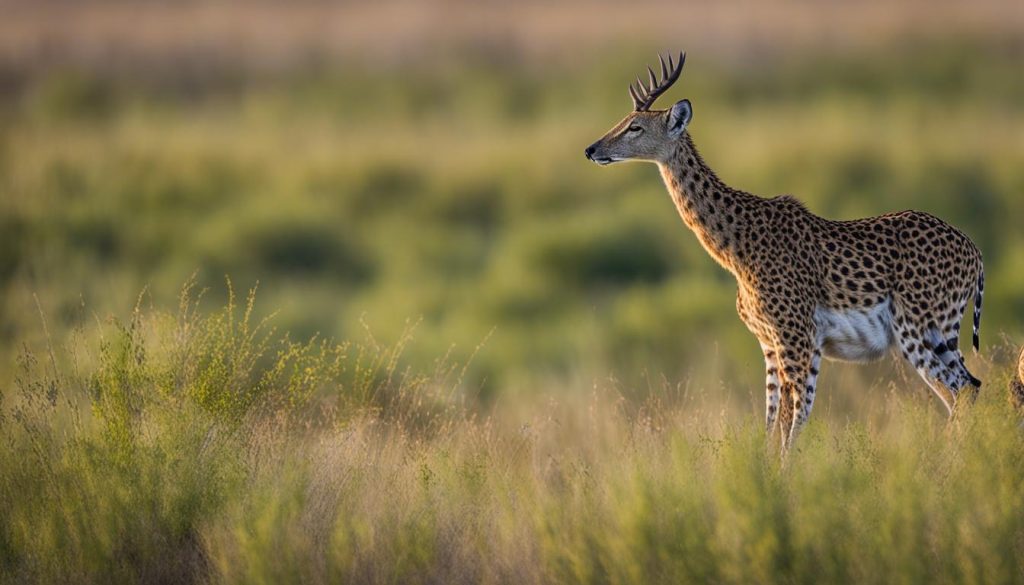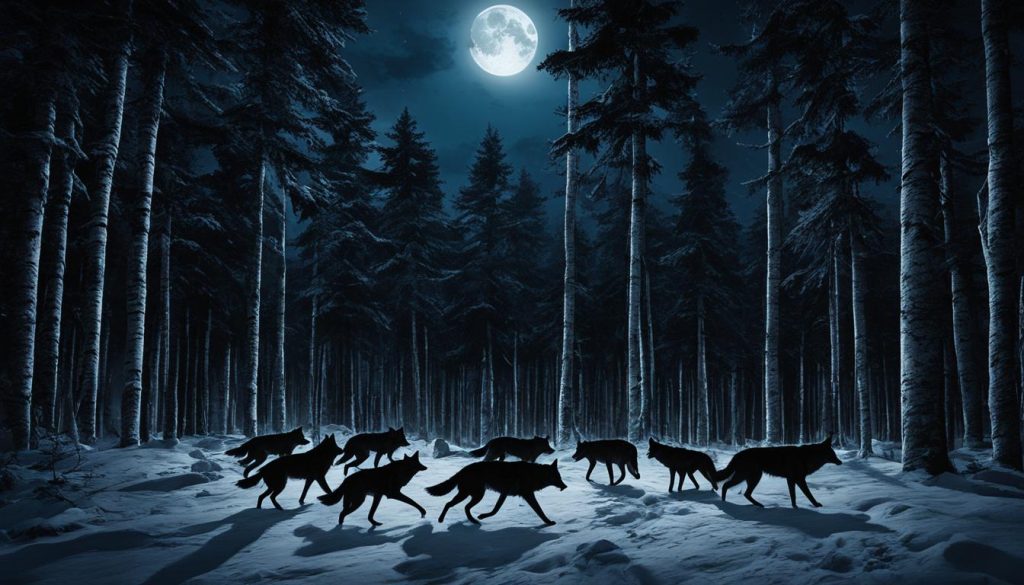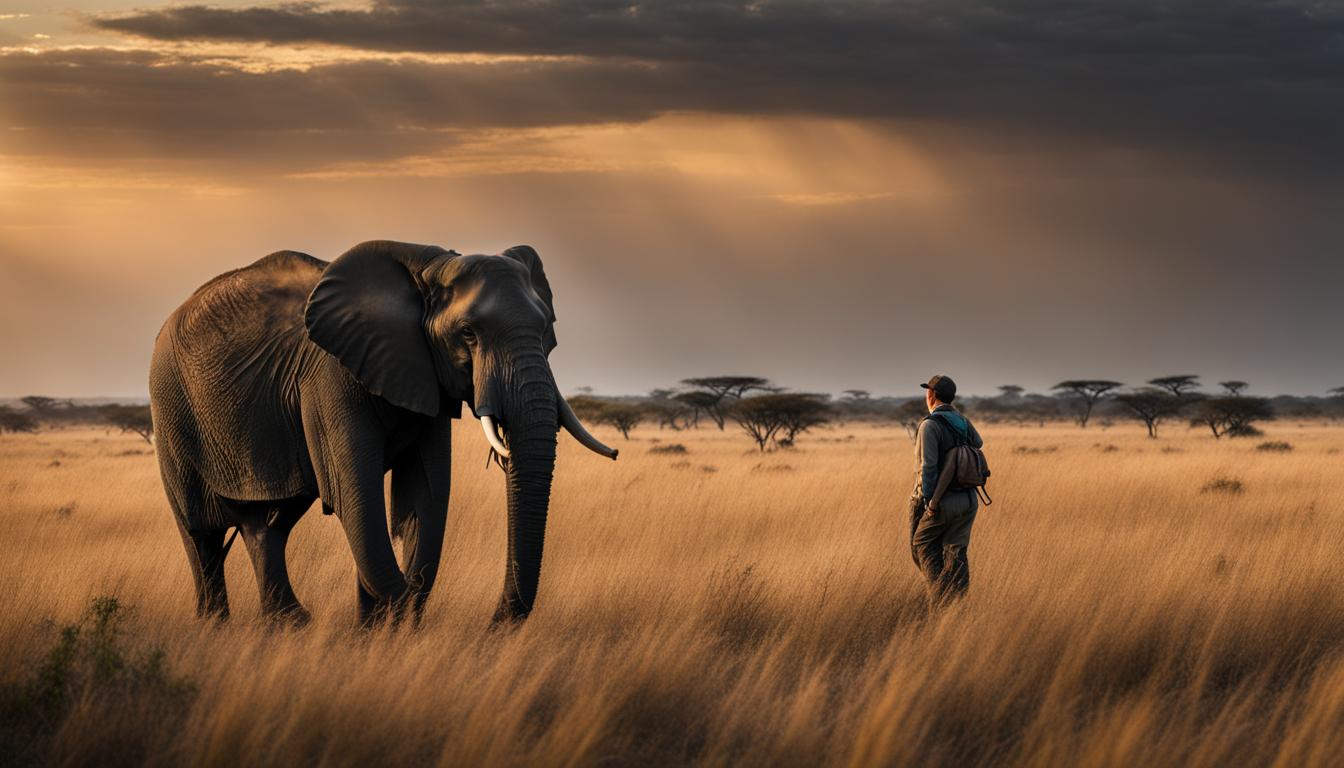Wildlife photography is a powerful medium that allows us to capture the breathtaking beauty of the natural world. It is not just about taking stunning images; it is about recognizing the responsibility we have as photographers to protect and preserve wildlife and their habitats.
In this article, we will explore the ethics of wildlife photography and the crucial role it plays in conservation efforts. We will delve into the principles of ethical wildlife photography, the importance of minimizing our impact and respecting personal space, and understanding animal behavior. Additionally, we will discuss the significance of patience and observation, and how considering the season and habitat can enhance our understanding and capture of wildlife moments.
By prioritizing ethics and responsibility in wildlife photography, we can inspire others to appreciate and care for the natural world. Let’s embark on this enlightening journey together and discover how we can make a positive impact through our lens.
Key Takeaways:
- Wildlife photography is an opportunity to raise awareness about the delicate balance of the natural world.
- Ethical wildlife photography involves respecting and protecting wildlife and their habitats.
- Minimizing impact and respecting personal space are key principles in ethical wildlife photography.
- Understanding animal behavior leads to capturing natural moments without causing distress.
- Patience and observation are essential for capturing natural-looking subjects in a comfortable environment.
The Principles of Ethical Wildlife Photography
When engaging in wildlife photography, it is crucial for photographers to uphold the principles of ethics and responsibility. One fundamental principle is non-interference, which involves capturing animals in their natural and undisturbed environments. By prioritizing the well-being of the animals, photographers can avoid causing harm, stress, or disturbance.
Photographers should refrain from approaching the animals too closely, touching them, or altering their natural habitats for the sake of getting a better photograph. Instead, the focus should be on capturing the true essence of the animals in their natural habitat, without causing any harm or disruption.
“The essence of wildlife photography lies in capturing animals in their natural and undisturbed environments.”
By respecting the boundaries of the animals and their natural habitat, photographers can ensure that their presence does not harm or disturb the wildlife. This includes understanding the signs of stress or discomfort in animals and adjusting their approach accordingly. It is important to remember that the goal is to capture the beauty of wildlife without causing any harm or disturbance.
The Principles of Ethical Wildlife Photography
| Principle | Description |
|---|---|
| Non-interference | Photographers should capture animals in their natural and undisturbed environments, avoiding actions that may cause harm, stress, or disturbance. |
| Respect for boundaries | Photographers should refrain from approaching animals too closely, touching them, or altering their natural habitats. |
| Understanding signs of stress | Photographers should study animal behavior to recognize signs of stress or discomfort and adjust their approach accordingly. |
By adhering to these principles, photographers can contribute to the conservation of wildlife and their natural habitats. They can raise awareness and inspire others to appreciate and protect the beauty of the natural world, ensuring that future generations can continue to experience the wonders of wildlife through photography.
Minimizing Impact and Respecting Personal Space
In ethical wildlife photography, it is essential to minimize the impact on the animals and their habitats. By keeping a distance and utilizing telephoto lenses with high focal lengths, photographers can capture stunning images while allowing the subjects to feel comfortable and exhibit their natural behavior. Respecting the personal space of the animals is of utmost importance to avoid causing stress or disrupting their natural routines.
By maintaining a safe distance from the animals, photographers can observe and document their behavior without interfering or causing harm. Telephoto lenses enable photographers to capture detailed shots from afar, eliminating the need to approach too closely. This not only preserves the integrity of the animal’s personal space but also allows for more authentic and natural shots.
When photographing wildlife, it’s crucial to remember that these animals are not merely subjects for our art, but living beings deserving of respect. By maintaining a respectful distance and using telephoto lenses, we can capture their beauty while ensuring they remain undisturbed in their natural habitat.
Respecting Personal Space: An Ethical Obligation
“In ethical wildlife photography, personal space is a fundamental aspect to consider. By respecting this space, we not only minimize our impact but also allow animals to behave naturally, offering unique and captivating moments for our lens.”
The use of telephoto lenses combined with high focal lengths enables photographers to bring wildlife closer to the viewer, without physically intruding upon their personal space. This technique not only showcases the mesmerizing details of the animals but also ensures their comfort and well-being. Remember, capturing incredible wildlife images goes hand in hand with maintaining a deep sense of respect for the magnificent creatures we photograph.

| Ways to Minimize Impact and Respect Personal Space |
|---|
| 1. Use telephoto lenses with high focal lengths to capture detailed shots from a safe distance. |
| 2. Avoid approaching too closely to prevent causing stress or disturbing the animals. |
| 3. Maintain a respectful distance to allow animals to behave naturally and undisturbed. |
| 4. Be patient and observe the animals from a distance to capture authentic and natural behavior. |
| 5. Refrain from altering the environment for the sake of a better photograph. |
Understanding Animal Behavior
To properly capture compelling wildlife photographs, it is essential for photographers to have a deep understanding of animal behavior. By studying and researching the behavior of different species, photographers can anticipate their actions and capture authentic and natural moments without causing distress.
One of the key benefits of understanding animal behavior is the ability to recognize signs of stress. Animals exhibit various signs when they feel threatened or uncomfortable, such as changes in body language, vocalizations, or attempts to flee. By being familiar with these signs, photographers can adjust their approach and maintain a respectful distance, ensuring the well-being of both the animal subjects and themselves.
Understanding animal behavior also allows photographers to determine the best time and location for wildlife photography. Different species have specific patterns of activity, such as feeding, mating, or hunting, which can vary throughout the day or year. By knowing when and where animals are most active, photographers can position themselves in optimal locations to capture captivating moments.
Moreover, studying animal behavior provides valuable insights into their natural habitat and preferred environments. Animals have specific ecological needs and are adapted to their surroundings, whether it’s the lush rainforests, arid deserts, or vast oceans. By understanding these habitats and respecting the animals’ natural surroundings, photographers can create images that truly showcase the beauty and authenticity of the animal’s natural environment.
Great wildlife photographs are a result of patience, observation, and an in-depth study of animal behavior. By appreciating the complexities of the animals we photograph, we can capture their unique personalities and the remarkable moments that make the natural world so captivating.

Key Points:
- Study and research animal behavior to anticipate actions and capture natural moments.
- Recognize signs of stress to adjust approach and maintain a respectful distance.
- Know the best time and location for wildlife photography to capture captivating moments.
- Understand the natural habitat and preferred environments of the animals for authentic representations.
Patience and Observation
Patience and observation are essential elements in ethical wildlife photography. Instead of rushing to capture a quick shot, taking the time to observe the animals and their movements can lead to better images. By patiently waiting and keenly observing, photographers can capture more natural-looking subjects in a comfortable environment.
When photographers approach wildlife with patience, they create a calm and non-threatening atmosphere. This allows the animals to go about their natural behaviors without feeling disturbed or threatened. By giving subjects the time and space they need, photographers can capture genuine moments that truly reflect the beauty and authenticity of the natural world.
Observation is another crucial aspect of ethical wildlife photography. By carefully observing the behavior of animals, photographers can anticipate their actions and capture shots that are both compelling and respectful. Understanding the habits and routines of wildlife helps photographers position themselves in the right place at the right time, increasing the chances of capturing breathtaking images.
“In wildlife photography, every moment counts. Observing the subjects allows us to enter their world and document their lives without causing any harm. It’s an extraordinary feeling to witness their natural behaviors unfolding right in front of our eyes.” – Jane Anderson, Wildlife Photographer
Being patient and observant also allows photographers to foster a comfortable environment for their subjects. When animals feel at ease in their presence, they are more likely to display natural behaviors and expressions. This leads to images that genuinely reflect the beauty and grace of wildlife in their natural habitat.
By practicing patience and observation, photographers not only capture extraordinary images but also contribute to the conservation of wildlife. Respecting the subjects and their environment is key to portraying the true essence of the natural world and inspiring others to appreciate and protect it.
Considerations for Season and Habitat
When it comes to wildlife photography, understanding the season and habitat is key to capturing incredible images. The behavior of animals can vary throughout the year, and their natural surroundings play a significant role in their activities. By considering these factors, photographers can enhance their chances of witnessing and documenting unique moments in the animal kingdom.
Seasonal Behavior
Throughout the seasons, animals undergo various changes in behavior that can significantly impact their photography. For instance, during the nesting season, many species become more protective of their young and tend to exhibit more cautious behavior. It is crucial for photographers to respect these instincts by maintaining a safe distance and avoiding any disruptions that might stress or endanger the animals or their offspring.
Additionally, migratory patterns can influence the availability of certain species in a particular area during specific times of the year. Understanding these seasonal movements allows photographers to plan their shoots accordingly, maximizing their chances of capturing remarkable images.
Habitat Considerations
Each habitat has its own unique characteristics that can shape the behavior of the wildlife within it. Whether it’s the dense rainforests, vast savannahs, or serene wetlands, photographers must adapt their approach to the specific environment they are photographing in.
Some habitats, such as fragile ecosystems or nesting grounds, require extra caution to avoid disturbing or damaging the delicate environment. For example, photographers should avoid trampling vegetation or disrupting areas where animals seek shelter or build their nests.
| Habitat Type | Description |
|---|---|
| Desert | Dry and arid landscapes with unique species adapted to survive extreme temperatures and scarce water resources. |
| Forest | Diverse ecosystems with dense vegetation, home to a wide variety of species, from small insects to large mammals. |
| Coastal | Environments where land meets the sea, characterized by sandy beaches, rocky shores, and diverse marine life. |
| Mountain | Elevated terrains with cold temperatures, high altitude, and unique flora and fauna adapted to thrive in challenging conditions. |
| Wetland | Areas with stagnant or slow-moving water, providing essential habitats for a wide range of aquatic species and migratory birds. |
Understanding the specific characteristics and nuances of each habitat enables photographers to capture images that truly showcase the beauty and diversity of wildlife in its natural environment.
“In every walk with nature, one receives far more than he seeks.” – John Muir
By considering the season and habitat in wildlife photography, photographers can create compelling images that not only tell a story but also raise awareness about the delicate balance of our natural world. Remember, it is our responsibility to respect and protect these habitats and the remarkable creatures that inhabit them.
Conclusion
In conclusion, ethical wildlife photography is of utmost importance in our efforts to protect and preserve the natural world. By conducting ourselves responsibly and respecting the well-being of animals and their habitats, photographers can capture stunning images while ensuring the conservation of wildlife.
Following the principles of non-interference, photographers must refrain from actions that may harm or disturb animals in their natural environment. By minimizing impact and respecting personal space, we can allow animals to feel comfortable and behave naturally, resulting in authentic and captivating photographs.
Understanding animal behavior plays a crucial role in ethical wildlife photography. By studying their habits and anticipating their movements, photographers can capture natural moments without causing stress or harm. Patience and observation are key, enabling us to interact harmoniously with wildlife and create images that truly reflect the beauty of nature.
As photographers, it is our responsibility to raise awareness about the importance of wildlife conservation. Through our images, we can inspire others to respect and protect the natural world. Let us all play an active role in safeguarding wildlife and their habitats for future generations to appreciate and enjoy.
FAQ
What is wildlife photography?
Wildlife photography is the art of capturing images of animals in their natural habitats.
Why is wildlife photography important?
Wildlife photography plays a crucial role in capturing the raw beauty of the natural world and raising awareness about the delicate balance of the environment.
What are the principles of ethical wildlife photography?
The principles of ethical wildlife photography include non-interference, minimizing impact, understanding animal behavior, practicing patience, and considering the season and habitat.
What does non-interference mean in wildlife photography?
Non-interference means that photographers should prioritize the well-being of the animals and avoid any actions that may cause harm, stress, or disturbance.
How can photographers minimize their impact on wildlife?
Photographers can minimize their impact on wildlife by keeping a distance, using telephoto lenses with high focal lengths, and respecting the personal space of the animals.
Why is understanding animal behavior important in wildlife photography?
Understanding animal behavior helps photographers capture natural moments without causing distress to the animals and adjust their approach accordingly to ensure the well-being of both the subjects and themselves.
What role does patience and observation play in wildlife photography?
Patience and observation are key elements in wildlife photography as they allow photographers to capture more natural-looking subjects in a comfortable environment by allowing the animals to come closer naturally.
Why is considering the season and habitat important in wildlife photography?
Considering the season and habitat is important in wildlife photography as it affects the behavior of animals and helps photographers give them the appropriate distance and avoid disrupting their nesting grounds or delicate environments.






